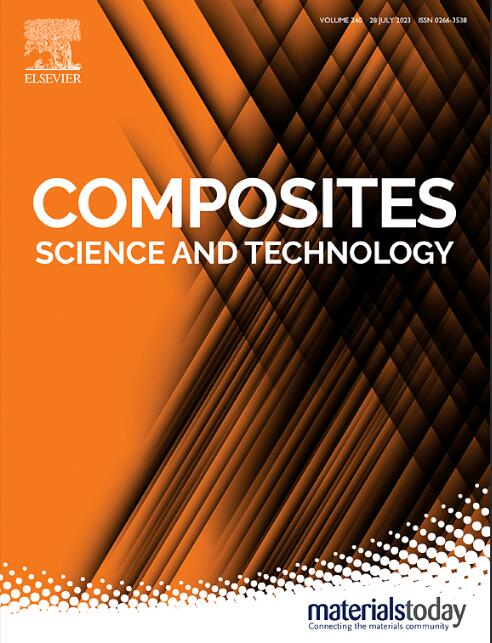复合推进剂的细观损伤演化及速率相关孔隙率的原位x射线层析预测模型
IF 9.8
1区 材料科学
Q1 MATERIALS SCIENCE, COMPOSITES
引用次数: 0
摘要
硝酸酯增塑聚醚(NEPE)复合推进剂广泛应用于固体火箭发动机,是运载火箭的动力源。推进剂在服役过程中经常受到复杂的机械载荷的作用,从而产生以裂纹和孔隙为代表的细观损伤,最终导致复合材料的承载能力降低。为了阐明NEPE推进剂在单轴拉伸作用下的内部损伤演化机制,本研究建立了原位x射线层析成像技术,提取了不同应变速率下NEPE推进剂的细观结构变化,并对组分和孔隙进行了重建,跟踪了损伤形态的演化。由于界面脱粘倾向于在大颗粒处开始,随着应变的扩展,脱粘界面会成长为孔隙,并根据不同的细观结构形成不同的损伤形态。此外,还分析了不同应变速率下的孔隙度演化规律,发现不同应变速率下的孔隙度演化具有明显的速率依赖特征。通过引入临界脱粘应力准则和孔隙演化模型,建立了基于速率的孔隙率预测模型,该模型与实验结果吻合较好,为复合推进剂的损伤评估和完整性分析提供了理论依据。本文章由计算机程序翻译,如有差异,请以英文原文为准。

Mesoscopic damage evolution and rate-dependent porosity prediction model of a composite propellant by in situ X-ray tomography
Nitrate ester plasticized polyether (NEPE) composite propellant is widely used in solid rocket motors, serving as the power source of the launch vehicles. The propellant is always subjected to complex mechanical loads during the service, which could induce mesoscopic damage represented by cracks and pores, then eventually reduces carrying capacity of the composite. To illustrate the internal damage evolution mechanisms of NEPE propellant under uniaxial tension, this study developed an in situ X-ray tomography to extract the changing of mesosturctures at different strain rates, then reconstruction of components and pores was conducted to track the damage morphologies’ evolution. As the interfacial debonding preferred to initiate at the large particles, the debonded interfaces would grow into pores with extension of strain, then formed different damage morphologies depending on mesostructures. In addition, the porosity evolution was analyzed at different strain rates, which presented distinct rate-dependent characteristics. By introducing critical debonding stress criteria with a pore evolution model, a rate-dependent porosity prediction model was proposed, and this model provided an excellent agreement with experiment results, which is valuable to damage assessment and integrity analysis of the composite propellant.
求助全文
通过发布文献求助,成功后即可免费获取论文全文。
去求助
来源期刊

Composites Science and Technology
工程技术-材料科学:复合
CiteScore
16.20
自引率
9.90%
发文量
611
审稿时长
33 days
期刊介绍:
Composites Science and Technology publishes refereed original articles on the fundamental and applied science of engineering composites. The focus of this journal is on polymeric matrix composites with reinforcements/fillers ranging from nano- to macro-scale. CSTE encourages manuscripts reporting unique, innovative contributions to the physics, chemistry, materials science and applied mechanics aspects of advanced composites.
Besides traditional fiber reinforced composites, novel composites with significant potential for engineering applications are encouraged.
 求助内容:
求助内容: 应助结果提醒方式:
应助结果提醒方式:


